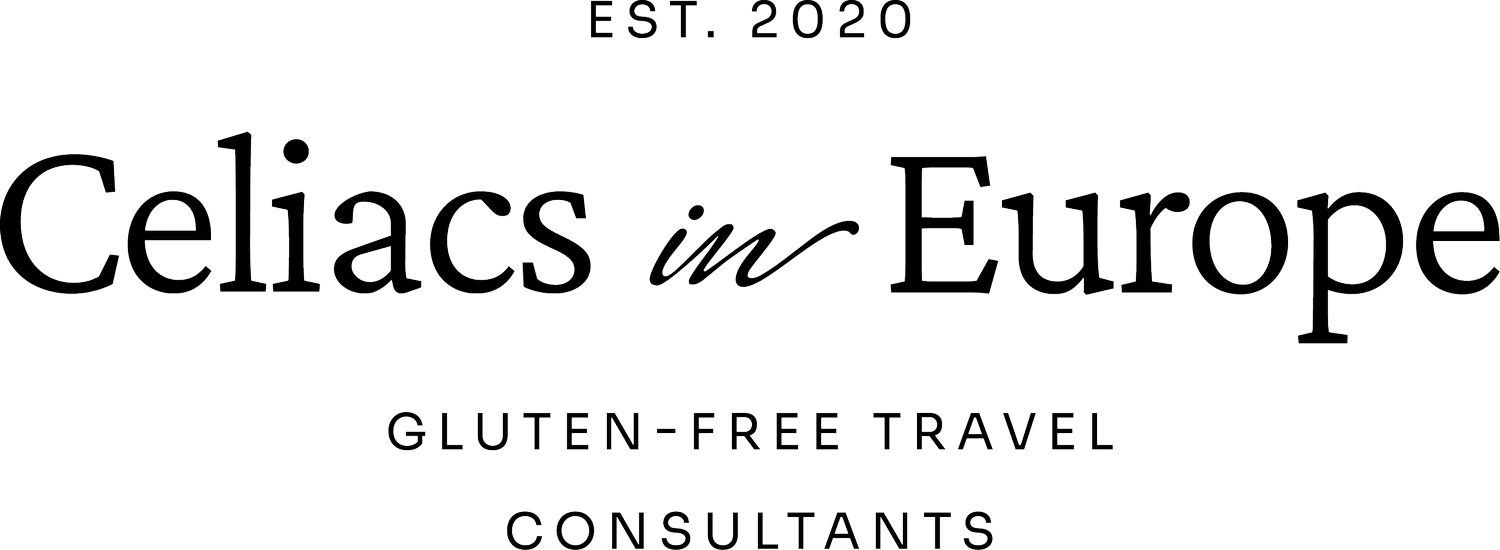Why Europe Is the Future of Celiac-Friendly Travel
Picture this. You're in a tiny trattoria in Florence, and the waiter not only knows what gluten is, but proudly hands you a separate celiac-safe menu. You don’t have to explain cross-contact, and you don’t have to settle for a plain salad while your travel companions dig into pizza. For people with celiac disease, this kind of experience isn’t a dream. It’s increasingly the reality in Europe.
If you’ve struggled to travel safely elsewhere, or have been burned by restaurants claiming to be "gluten-friendly," it’s time to shift your focus. Europe is quickly becoming one of the safest and most enjoyable regions in the world for gluten-free travel, and the rest of the world is playing catch-up.
Here’s why.
1. Clear, Consistent Labeling Across Countries
Food packaging in Europe makes life easier for celiacs. Thanks to EU Regulation 1169/2011, allergens like wheat, barley, and rye must be clearly marked on all packaged foods. Ingredients are typically bolded or highlighted, so you can spot gluten-containing items in seconds. This regulation applies in every EU country, so once you learn the system, you can use it across borders. That’s a game-changer for multi-country trips!
Look for symbols like the Crossed Grain Trademark, the official European gluten-free certification mark. It’s used across the EU and signifies that a product contains less than 20 parts per million of gluten, making it safe for people with celiac disease.
2. Higher Awareness = Better Diagnosis Rates
In countries like Italy and Finland, celiac disease isn’t considered rare. National screening programs, government support, and strong patient advocacy groups have helped normalize the condition.
Italy goes even further. The Italian government offers monthly stipends to cover the added cost of gluten-free groceries for citizens with celiac disease and schools and hospitals are required to offer gluten-free options. This widespread awareness spills into tourism, where you’ll find hotel breakfasts with labeled GF options and waitstaff trained to understand dietary needs.
When celiac disease is taken seriously on a national level, it filters into every part of daily life, including how tourists are treated!
3. Accredited Gluten-Free Restaurants Exist and Are Growing
It’s one thing to find a restaurant that says it offers gluten-free food. It’s another to know that the staff have been trained, the kitchen is cross-contact aware, and the procedures are regularly checked.
In Europe, that’s increasingly possible. Italy’s national celiac association (AIC) accredits over 4,000 restaurants nationwide that meet strict gluten-free standards. Plus, Spain and the UK also have robust restaurant education programs through national organizations as well.
4. 100% Gluten-Free Spots Are Thriving
All across Europe, chefs with celiac disease (or celiac family members!) are opening fully gluten-free cafés, bakeries, and bistros. These are places where you don’t just feel safe, you feel seen.
Cities like Barcelona, London, and Rome have become hotspots for entirely gluten-free dining. You’ll find everything from flaky croissants to wood-fired pizza, made without compromise. And it’s not just major capitals….even smaller towns are catching on, particularly in countries with strong national celiac associations. The demand is growing, and Europe is answering!
5. Infrastructure That Supports Long-Term Travel
Europe isn’t just safe for a quick vacation. It’s also a strong choice for extended travel, remote work, or even relocation.
Most supermarkets offer wide gluten-free sections, and in some countries, these items are subsidized for locals with a diagnosis. Pharmacies often stock gluten-free staples like pasta and cookies. Many budget airlines provide gluten-free meals if booked in advance, and even train station cafés label allergen-friendly options. The infrastructure is designed to support day-to-day celiac life (not just tourists) and that means more consistency and reliability for travelers too.
6. Europe Sets the Standard the World Should Follow
What Europe is doing isn’t perfect, but it’s light years ahead. The combination of legal protections, cultural awareness, nonprofit leadership, and consumer demand is creating a roadmap for what gluten-free travel should be, and we can only hope that other countries will follow in our footsteps.
This is why at Celiacs in Europe, we’ve built our entire model around this region. It’s where safe, confident travel is not just possible, but expected. And we’re here to help you navigate it with ease. Whether you're planning your first international trip or you're ready to return to your favorite cities with a new sense of freedom, Europe is the place to be.
Need Help Planning a Safe Gluten-Free Trip to Europe?
Ready to plan your gluten-free adventure? Our local experts offer 1:1 consultations for Italy, Greece, France, and the UK so you can skip the stress and start dreaming about your next safe, delicious trip.
🇮🇹 Start Planning Your Italian Adventure
🇬🇷 Start Planning Your Greek Getaway
🇫🇷 Start Planning Your French Expedition
🇬🇧 Start Planning Your UK Outing
Not headed to one of those countries just yet? No problem. We’re getting ready to launch consultations for Spain, Portugal, and Germany, and you can be the first to know when they’re live!
🇪🇸 Join the Waitlist for Spain
🇵🇹 Join the Waitlist for Portugal
🇩🇪 Join the Waitlist for Germany
Because you deserve a trip where feeling safe and eating well go hand in hand!

